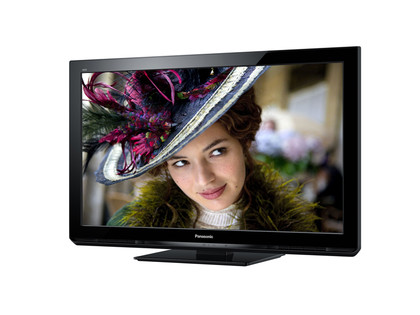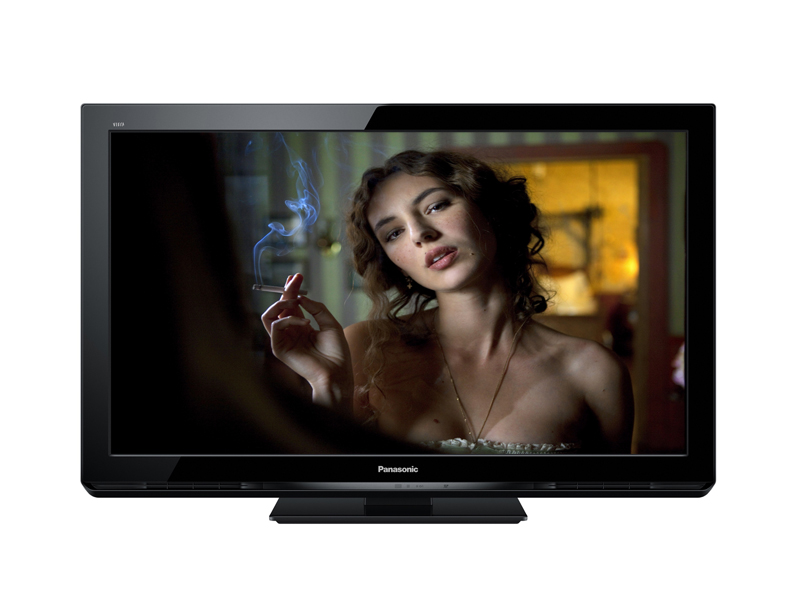Why you can trust TechRadar

As noted in the introduction, the P42S30 is no oil painting. Its bezel is chunky, and finished in the same gloss black colour that's so common nowadays. It also sticks out more round the back than your average flat TV. It is, however, extremely solidly built for a budget TV, complete with toughened glass over the screen.
The P42S30's connections are respectable for its price point. HD video duties can be performed by three HDMIs (one down the side, two on the rear), while multimedia duties are performed via a LAN port and a couple of USB inputs. The set can be enabled for Wi-Fi too, if you cough up extra money for Panasonic's USB Wi-Fi adaptor.
The USBs can play a pretty wide variety of file formats, including AVCHD, SD-Video, Motion JPEG (Lumix), MP4 (Xacti), DivXPlusHD, MKV, WMV, JPEG, MP3, AAC and WMA. The USBs do not support recording from the built-in Freeview HD tuner though, unllike the step-up G30 series.
That's not the only multimedia shortcoming versus the G30 series either. For the P42S30 also can't stream files in from a DLNA-enabled PC via either its optional Wi-Fi or LAN connections. The network features are restricted to potential interactive services that might come up through the Freeview HD platform, and access to Panasonic's Viera Connect online system.
One last point to add about the P42S30's connections is that those on the rear face straight out, which could cause people some problems if they want to wall-mount the set.
Viera Connect
At the time of writing, Panasonic's Viera Connect online system is rather off the pace for such services set by the likes of Samsung, Sony and LG. Its content level is pretty limited, built around what's currently just a handful of video services such as the BBC iPlayer, Eurosport and AceTrax.
Sign up for breaking news, reviews, opinion, top tech deals, and more.
Also, while the Viera Connect interface is attractive, it's rather clunky compared with LG and Samsung's Smart Hub interface, and it's certainly not equipped to handle the really large amounts of content already starting to appear on some rival platforms.
The good news is that Panasonic's currently uninspiring online service is on the verge of some major upgrades, thanks both to the opening of a new Marketplace where you can buy new apps, games and accessories, and the recent opening up of the Viera Connect platform to independent app developers.
Specifications
Looking into the core hardware technology inside the P42S30, its NeoPDP design means it doesn't benefit from the latest energy-saving, contrast-enhancing and brightness boosting features delivered by the extremely impressive new NeoPlasma panels. But experience of the NeoPDP design means that it should still enjoy good black levels by flat TV standards, as well as natural colours and practically no noise problems.
The set still enjoys a claimed contrast ratio of 2,000,000:1 too (versus 5,000,000:1 on the G30 range), as well as Panasonic's now pretty much standard '600Hz Sub-field drive' technology and 24p Smooth Film processing for enhanced Blu-ray playback.
A search for features in the P42S30's onscreen menus doesn't really throw up anything particularly interesting. Unlike models higher up Panasonic's range, this set doesn't enjoy the endorsement of either THX or the Imaging Science Foundation (ISF), and so it doesn't bother going to town with such picture calibration aids as a full colour management system.
This doesn't seem an unreasonable situation for a budget TV, though. For at the risk of generalising, someone spending as little as £500 on a TV is unlikely to want to spend as much again on paying a trained engineer to come and calibrate that TV professionally.
The only features in the menus that are even worth mentioning, really, are three settings (off, mid and max) for Panasonic's Intelligent Frame Creation frame insertion processing, a Clear Cinema option that claims to improve the vertical resolution for movie images, Panasonic's Resolution Enhancer for improved sharpness with standard definition sources, and a couple of measures - a picture 'orbiter' and a white screen 'wipe' - designed to combat plasma's potential for image retention.
Not that experience suggests anyone should suffer any real problems with this on a NeoPDP panel; it actually seems more of an issue on this year's high-brightness NeoPlasma sets. That said, it's always recommended that you don't leave things like richly colour channel logos onscreen for too long at a time in the first 100 hours or so of your new TV's life.

John has been writing about home entertainment technology for more than two decades - an especially impressive feat considering he still claims to only be 35 years old (yeah, right). In that time he’s reviewed hundreds if not thousands of TVs, projectors and speakers, and spent frankly far too long sitting by himself in a dark room.
